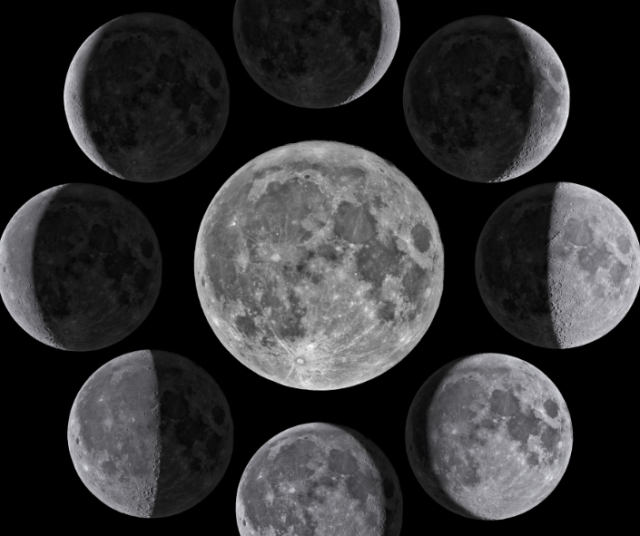The universe is a vast, ever-changing landscape, and one of the most fascinating celestial phenomena is the cycle of the Moon. February 2024 promises to be a special month, as we immerse ourselves in a lunar calendar full of mystery and beauty.
The Moon, our natural satellite, has captured the imagination of humanity throughout history. Its soft, changing light has inspired us in countless ways, from poetry and mythology to calendars and rituals. February 2024 gives us the opportunity to observe this celestial body in its full splendor, as it goes through its different phases.
Lunar Phases of February 2024
New Moon (February 1):
The month begins with the Moon in its "New Moon" phase. At this time, the Moon is in direct alignment with the Sun, and its illuminated side is not visible from Earth. It is the starting point of a new lunar cycle.
Crescent Quarter (February 8):
As we progress through the month, the Moon begins to reveal an increasing portion of its illuminated side. The "First Quarter" marks this visible growth, creating a beautiful crescent shape in the sky.
Crescent Gibbous (February 15):
The Moon continues to grow in size, and by the middle of the month, we experience the "Waxing Gibbous" phase. At this stage, more than 50% of the visible side of the Moon is illuminated, but it has not yet reached its fullness.
Full Moon (February 22):
The climax of the lunar month comes with the "Full Moon." Right now, the Moon is completely illuminated from our point of view on Earth. The night of the Full Moon is magical and is often associated with various cultural beliefs and rituals.
Waning Gibbous (February 29):
As we say goodbye to February, the Moon begins to dim in the night sky. The "Winning Gibbous" shows an almost complete shape, but with an increasingly smaller part illuminated.
Lunar Curiosities and Cultural Traditions
The Moon, with its mysterious glow, has intrigued humanity since time immemorial. In this section, we will explore the fascinating curiosities related to our natural satellite and the various cultural traditions that have emerged around it.
Effects of the Moon on Earth:
The Moon not only illuminates our nights; It also exerts a palpable influence on Earth. One of the most obvious manifestations of this connection is the phenomenon of tides. Gravitational forces between the Moon and Earth generate tides, affecting bodies of water across the planet. This celestial dance influences marine life and, in some places, determines the rhythm of fishing and sailing.
In addition to the tides, there are popular beliefs about how the Moon can influence human behavior. Although scientific evidence is limited, some people maintain that moon phases affect human sleep and emotions. We will explore these myths and their historical roots.
Lunar Mythology:
The Moon has been a constant muse for human creativity, giving rise to a rich mythology in various cultures. In Greek mythology, Artemis, the goddess of the Moon, personifies beauty and the hunt. In contrast, Chinese mythology tells the legend of Chang e, the lunar goddess who resides on the Moon. These mythological narratives not only offer poetic explanations about the Moon, but also reveal the complex emotional and spiritual connections that humans have established with our satellite.
Lunar Celebrations in Various Cultures:
The Moon is not only the object of myths; It is also a reason for celebration in many cultures. The Moon Festival in China, also known as the Mid-Autumn Festival, is an annual holiday that coincides with the Full Moon. Families gather to enjoy delicious meals and admire the lunar beauty. In Thailand, the celebration of the Full Moon, known as Loy Krathong, involves launching small boats adorned with candles into the water, expressing gratitude and selflessness.
Influence of the Moon on Agriculture:
Agricultural traditions have also incorporated the Moon into their practices. Some communities maintain that certain lunar phases are more conducive to planting or harvesting crops. Although modern science challenges these beliefs, the connection between the Moon and agriculture persists in some regions, showing how ancient perceptions continue to influence contemporary practices.
Practical Moon Observation:
For those who wish to enjoy the beauty of the Moon in February 2024, we will provide practical advice on how to observe the lunar phases, whether with telescopes, binoculars or simply with the naked eye.
